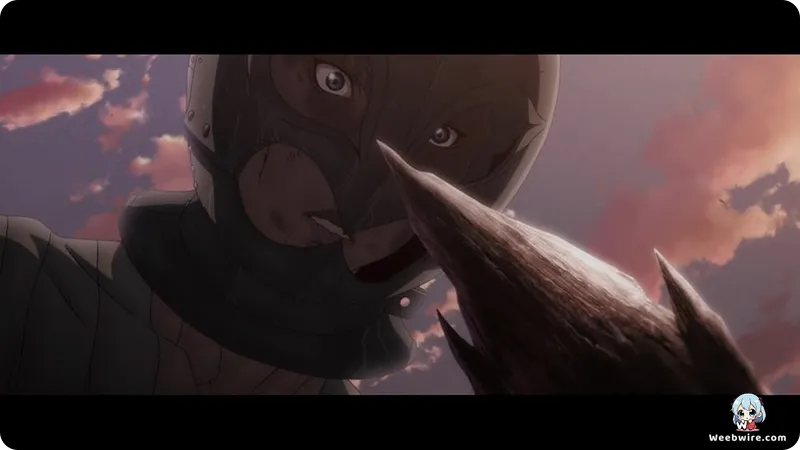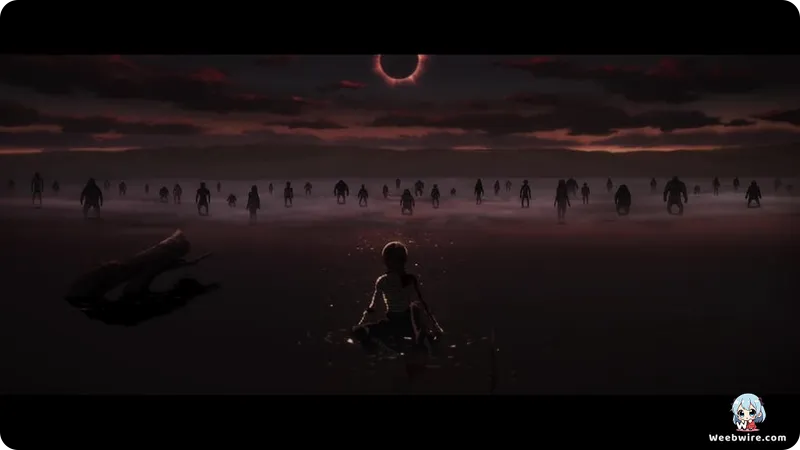Unearthing the Unseen Brilliance: The Enduring Impact of 'Berserk: The Golden Age Arc III - The Advent'

Over a decade has passed since its monumental release, yet Berserk: The Golden Age Arc III - The Advent continues to stand as a pivotal achievement, not only for devoted followers of Kentaro Miura's legendary dark fantasy saga but for the entire animation landscape. This cinematic tour de force, serving as the devastating conclusion to the 'Golden Age Arc' trilogy, is globally recognized for its unflinching portrayal of the 'Eclipse' – an event so crucial, so viscerally brutal, and so profoundly psychologically scarring that its faithful translation to the screen presented an unparalleled hurdle for the artists at Studio 4°C. Beyond its raw, horrifying spectacle, The Advent is steeped in fascinating production details and deliberate creative choices that definitively cemented its place in the annals of anime history.
The film's unwavering commitment to meticulously adapting the 'Eclipse' sequence, almost frame-by-frame from Miura’s original manga, is truly remarkable. Miura himself was renowned for his almost obsessive dedication to detail, dedicating countless hours to a single panel to perfectly convey the immense scale, terror, and intricate anatomy of his demonic creations. For Studio 4°C, translating this level of painstaking horror into a dynamic, moving image, while preserving its suffocating atmosphere and profound emotional resonance, was a gargantuan undertaking. They masterfully blended traditional 2D animation, used for nuanced character expressions and pivotal moments, with cutting-edge 3D CGI to render the countless legions of Apostles and the expansive, otherworldly landscape of the Eclipse dimension. This innovative fusion was not merely a stylistic flourish; it was a pragmatic decision essential for depicting the overwhelming numerical superiority of the demonic forces and the vast, hellish environment, a feat that would have been incredibly time-consuming and potentially less impactful using solely traditional animation within the constraints of the production schedule. The ultimate aim was to immerse the viewer in the inescapable nature of the unfolding doom, mirroring Guts and Griffith's desperate plight.

Furthermore, the film's meticulously crafted sound design and the haunting musical score, orchestrated by the iconic Shiro Sagisu – celebrated for his work on Neon Genesis Evangelion and Bleach – played an absolutely indispensable role in elevating the horror far beyond mere visual shock. Sagisu’s score for The Advent is a veritable masterclass in psychological torment. Rather than relying solely on grandiose orchestrations, he skillfully employed unsettling dissonances, chilling choral arrangements, and deeply unsettling ambient sounds to forge an almost suffocating auditory experience. The infamous 'God Hand' theme, for instance, transcends a simple melody; it is a cacophony of distorted whispers, profound, rumbling thrums, and an escalating sense of existential dread that flawlessly underscores the Lovecraftian horror of the cosmic entities manifesting before Griffith. This deliberate sonic assault contributed immensely to the film's overwhelming sense of despair and the irreversible nature of the cataclysmic events, transforming it into a uniquely immersive and terrifying journey that transcends simple visual gore.
Another compelling, though lesser-known, aspect of the film is the profound impact of its voice acting, particularly the performances of Guts and Griffith. Hiroaki Iwanaga, as Guts, delivered a raw, visceral portrayal of agony that perfectly captured the character's internal turmoil and physical anguish, resonating deeply with manga enthusiasts. Takahiro Sakurai, embodying Griffith, delivered a performance that subtly evolved from his initial charismatic ambition to the chilling, detached transformation into Femto. The climax of The Advent demanded an extraordinary level of emotional complexity, requiring Sakurai to convey both the ultimate despair of Griffith's shattered state and the cold, almost divine resolve of his rebirth. His nuanced delivery during the pivotal sacrifice scene, where his humanity irrevocably gives way to monstrous ambition, is frequently lauded as a standout performance, capturing the chilling essence of Miura’s original portrayal without resorting to overt villainy. This intricate voice work was fundamental in making the characters' descent into madness and betrayal profoundly believable, adding a crucial layer of psychological depth that powerfully complements the visual brutality.
Moreover, the very nature of the 'Golden Age Arc' as a foundational prologue to the broader Berserk narrative meant that The Advent had to function as a definitive, shocking origin story for Guts's subsequent struggles as the Black Swordsman. Miura himself had structured the 'Golden Age Arc' as a flashback, so audiences were already privy to Guts's eventual fate. The paramount challenge for the film was not if the Eclipse would occur, but how it would unfold, and how the film could imbue an already known tragedy with a fresh, impactful, and utterly soul-crushing intensity. Studio 4°C's directorial approach, under the astute guidance of Toshiyuki Kubooka, strategically focused on cultivating an inescapable sense of dread throughout the entire trilogy, culminating in the suffocating terror of The Advent. They acutely understood that the film's true power lay in the psychological breakdown of its characters and the shattering betrayal of trust, more so than just its grotesque visuals. The conscious decision to emphasize the emotional toll and the overwhelming sense of absolute despair was a deliberate artistic choice to ensure the film's lasting impact, solidifying its place as a quintessential benchmark in dark fantasy animation.
In essence, Berserk: The Golden Age Arc III - The Advent is far more than just a faithful adaptation of a horrific manga arc; it stands as a powerful testament to the collective artistic genius of its production team, from Miura’s foundational vision to Sagisu’s haunting score and the actors’ visceral performances. It powerfully illustrates how animation, when approached with audacious creative choices and a profound understanding of its source material, can transcend its medium to deliver an experience that is not only visually shocking but profoundly unsettling and unforgettable, cementing the 'Golden Age Arc's' legacy as a defining narrative in the dark fantasy genre. The film's enduring power emanates from these meticulous details and daring artistic risks, which made a well-known tragedy feel horrifyingly new all over again.
Credits
Berserk: The Golden Age Arc III - The Advent
Author
Kentaro Miura
Cover Art
Naoyuki Onda (Character Designer) / Studio 4°C
Studio
Horipro
Publisher
Hakusensha
Producers





